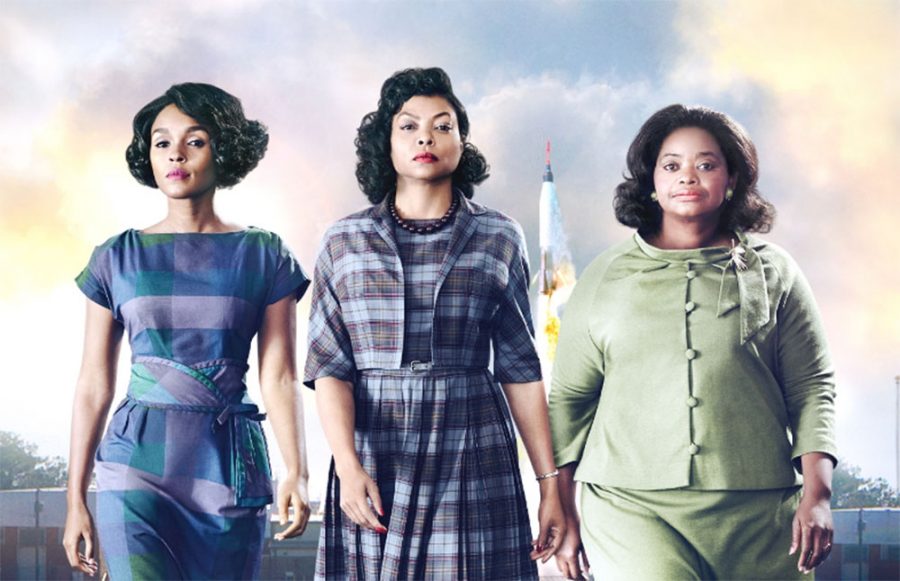“Hidden Figures” Finally Found
January 17, 2017
The past two weekend’s highest grossing film “Hidden Figures” reveals a story of heroic women that wrongfully has gone unnoticed. Directed by Theodore Melfi, it tells the true story of three brilliant and strong-willed women who, despite many obstacles, made history (or, in this case, herstory) at NASA leading up to the historic launch of Friendship 7 in 1962, commanded by John Glenn, the first American astronaut to orbit the earth.
The first of these three women is Katherine Johnson (Taraji Henson), a single mother of three adorable daughters and a mathematical mastermind. When NASA grows desperate for someone who can “look beyond the numbers” and delve into the world of analytical geometry, Johnson is recommended. Despite her gender and race, she is permitted to join the top team of mathematicians at NASA. Being the first African-American woman to set foot in the room of predominantly white men, Katherine is met with a trash bin shoved into her already full hands, which is a clear marker of her racist surroundings. Overtime, Katherine proves herself as one of NASA’s top mathematicians and continues to push the boundaries of what women are allowed to do within the space program.
This film also follows the stories and milestone accomplishments of Katherine’s co-workers and closest friends Dorothy Vaughan (Octavia Spencer) and Mary Jackson (Janelle Monae). Throughout the film, Dorothy battles to become a manager, a position she unofficially holds, but is not compensated for. She eventually masters the programming of NASA’s newest IBM computers and trains her female African-American staff to operate them.
Mary fights to gain admission to an all white university to receive an engineering degree, a requirement that applied exclusively to African-American employees. She ultimately becomes NASA’s first African-American female engineer.
“Hidden Figures” reminds one of African Americans’ stark reality during the times of racial segregation and makes their struggles more relatable. Such injustices are poignantly illustrated when Katherine runs into the workroom after taking a bathroom break. Her boss approaches her in front of her co-workers and questions her for leaving her desk for 45 minutes. Instead of holding herself together, as women were often expected to do, Katherine bursts into tears and explains that every time she needs to relieve herself, she runs a half-mile each way (in heels) to get to the Colored Women’s bathroom.
While at that time, women were encouraged to be proper and complacent, they also internalized their frustrations, including being denied having their work attributed to them. Now, girls and women are encouraged to speak up, yet they are still the minority in scientific fields and have to endure a range of workplace struggles because of their sex. This film indirectly reiterates the lack of progress society has made with regard to gender equality in the scientific world. Of the many witty one-liners in this film, one perfectly sums it up. When Mary is asked if she would wish to be an engineer if she were a white man, she immediately responds: “I wouldn’t have to. I’d already be one.”
Overall, “Hidden Figures” is a film that not only speaks to critical social issues of racism and sexism that sadly are still prevalent in today’s society, but it also includes many tender mother-child moments, a sense of suspense and urgency, as well as hints of romance and humor that audiences are sure to enjoy.

